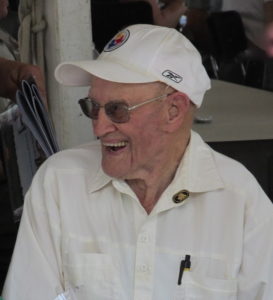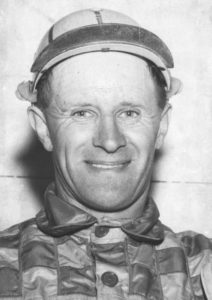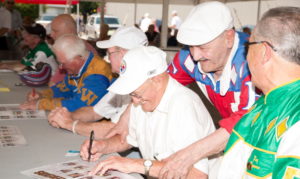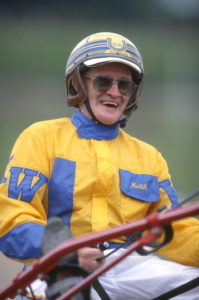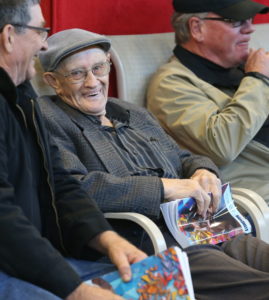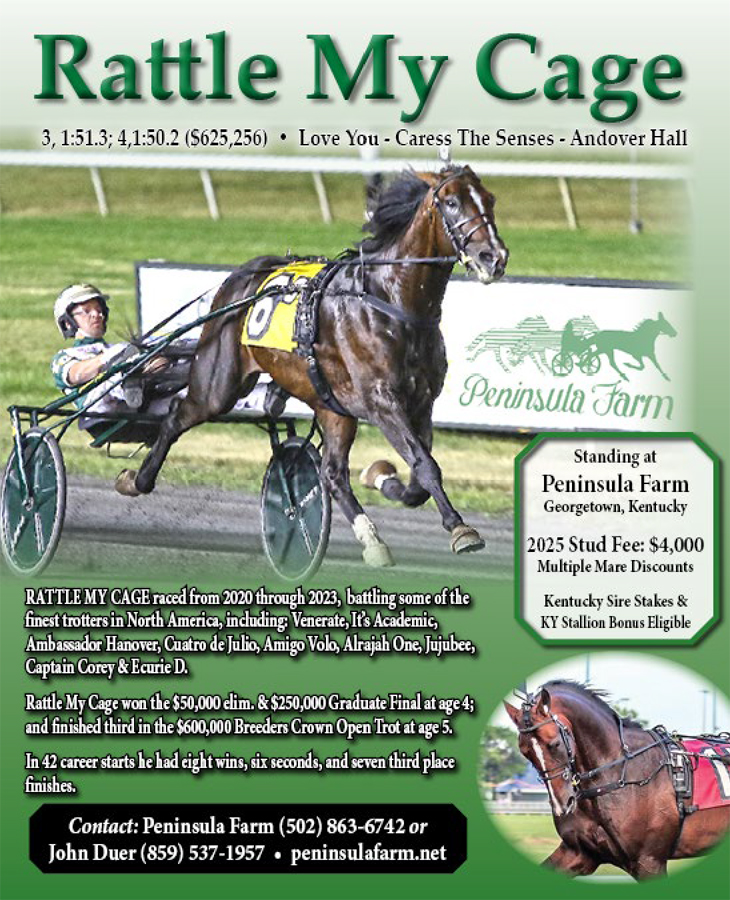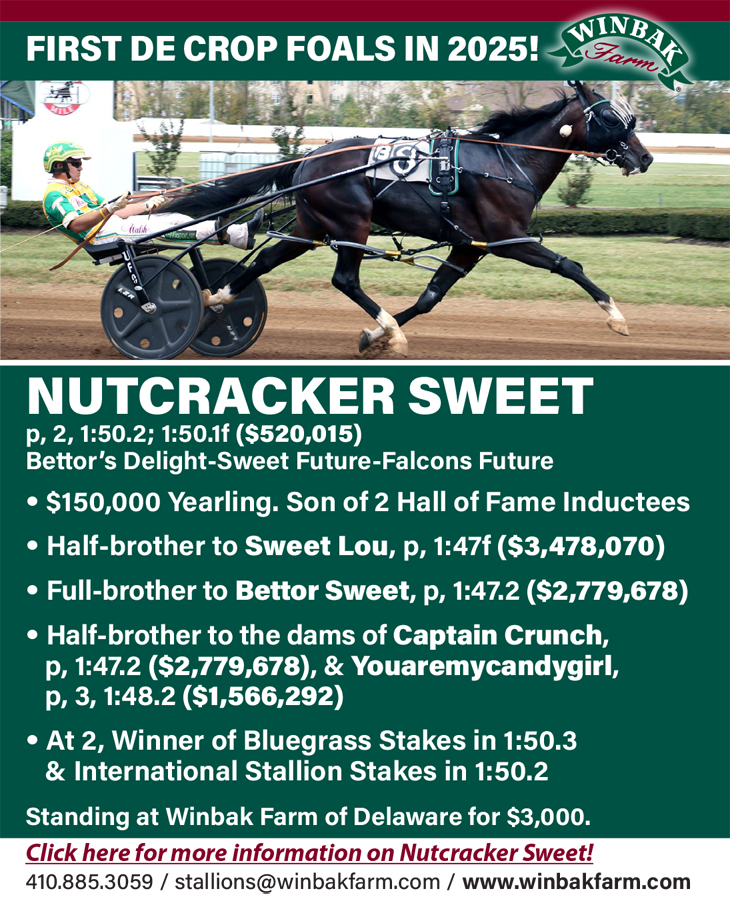
Horses the secret to Keith Waples’ long, legendary life
The harness racing luminary, who died Friday at the age of 97, once said, “A fellow has to have a reason — horses that need feeding, for example — to get out of bed in the morning.”
by Dave Briggs
Sometime in 2005, I was completely schooled on just how legendary Keith Waples was in the annals of the sport. That was the year The Canadian Sportsman published a poll asking readers to pick the greatest Canadian horseperson in the history of harness racing.
Being young and naïve and, of course, never having seen Waples in action, I thought it was a slam dunk that readers would crown John Campbell. Boy, was I wrong. Waples crushed a field of superstars on a list of five finalists that also included his cousin, Ron Waples, Campbell, Doug Brown and Joe O’Brien (A long list of other Canadian luminaries such as Bill O’Donnell, Ben White, Bill Wellwood, Mike Lachance, Bob McIntosh, Jack Kopas, Herve Filion and many more also received votes, but that was the readers’ choice for the final five).
Sure the poll was utterly subjective and completely unscientific, but the fact Keith received nearly twice as many votes as the second-place finisher spoke volumes and will always stand, for me, as one of the more incredible things about his decorated career which ended Friday (May 7) when he died at the age of 97. Keith’s legend transcended decades and, largely, came via word of mouth as there was not much video footage of his legacy on which younger generations could gauge his greatness.
THE LEGENDS’ LEGEND
When Keith won the poll, so began my education and I wrote the following announcing his victory:
I never have had the good fortune to see Keith Waples race — unless, of course, you count Legends Days at Clinton Raceway in 2001 and 2003 when he drove in the Legends Day Trot at the ages of 78 and 80, respectively.
Mighty Dudley’s ground-breaking mile — the first to smash the 2:00 barrier on Canadian soil — came in 1959, 10 years before I was born.
I was three when Waples won the Little Brown Jug in 1972 with John Hayes, Sr.’s great pacer Strike Out.
I missed the start of Waples’ career at the Sundridge, ON fairgrounds at the age of 12 in 1936 by a whopping 33 years.
I never had the chance to see racing at Orangeville Raceway, which Waples helped build and I was just seven when Waples, his brother Murray and family friend Jim Keeling, Sr. opened Cloverdale Raceway (now Fraser Downs) in 1976 in suburban Vancouver, BC, an operation which became the cornerstone of racing on the west coast.
But I am, now, intimately familiar with the affect the (then) 81-year-old double Hall of Famer has had on people. Cemented in my mind is Aug. 31, 2003 in Clinton. That night, after a soul-stirring Legends Day card at the track, folks packed the Legion Hall to celebrate 10 of greatest Canadian horsepeople of all time.
His was the last name called in a lineup of legends, champions, Hall of Famers all. When Waples was introduced, the room erupted in a stirring standing ovation. Tears welled in Waples’ eyes. To his left, the other legends grinned and clapped enthusiastically, clearly delighted with the crowd’s special recognition of Waples.
After all, Waples is the legends’ legend; a man revered by his peers.
Bob Heyden from the Meadowlands has heard the reverence in their voices countless times. Though he too didn’t have the good fortune to witness the peak of Waples’ career, he can appreciate the impact Waples has had on the sport.
“Try talking to Herve Filion or Ron Waples or Bill O’Donnell about Keith, and you’ll get a REAL sense of what kind of horseman he was,” Heyden said.
PROUDFOOT ON KEITH
Seven years before the poll, Hall of Fame writer Jim Proudfoot of Toronto Star fame penned a feature about Keith for The Sportsman that was both delightful and enlightening, especially since the subject lived to the cusp of 100 and was still active owning and, occasionally sitting behind horses, to the end:
Keith Waples, (then) 74, has figured out how to be a happy, healthy possibly everlasting senior citizen — and is only too happy to share the secret with anybody who cares to inquire.
Never retire. Don’t even think about it. And keep busy, which flows inevitably from item one if you happen to be involved with horses.
“I tried cutting away back in the 1970s, which was a big mistake,” the maestro of standardbred teamsters said recently, supplementing a 40-year series of interviews or, to be totally accurate, chats. “It didn’t take long for me to get sick of doing nothing. I was back training and driving real soon. And the comeback, if that’s the right word, has lasted 22 years with no end in sight.
“It boils down to one very simple thing: A fellow has to have a reason — horses that need feeding, for example — to get out of bed in the morning.”
Waples agrees with the notion a person who truly loves racing will always stick around at least one extra year just to see if that fledgling colt will actually fulfill his demonstrated promise — in other words, that science has yet to develop medicine as effective as equine potential…
Officially, Standardbred Canada statistics credit Waples with having reined 3,207 winning races and merely $6,770,612 in combined purses, but these numbers tell a story laughably bereft of accuracy. He flourished during a period when such totals weren’t compiled — and when the cash on offer was minuscule in comparison with today’s nightly bonanzas.
Yet Waples’ skills and judgments have never faltered, a claim easily substantiated by the fact he was 67 when he acquired what is now characterized as the finest steed he ever got his hands on. That would be Silver Almahurst, a free-for-all pacer that set world records, retired with a mile mark of 1:49.4 and amassed a bankroll of $1,091,024.
There are innumerable highlights on the list of extraordinary steeds Waples has steered — among them Strike Out, the Little Brown Jug winner of 1972, Alberts Star, General Star, Tie Silk, first home in the 1962 Roosevelt International, Duke of Decatur, Choir Boy, Blaze Pick and going back to the 1954 Maple Leaf Trot, Ben Boy. But his name will be associated forever with Mighty Dudley, author in 1959 of the first Canadian mile under two minutes.
Waples is compelled to chuckle when he measures that historic 1:59.3 dash against Silver Almahurst’s 1:49.4 — a staggering 49 lengths better.
“I knew horses were bound to get a lot faster, but I could never have predicted what would actually happen. It really is amazing,” he said. “But you know, billions of dollars have been spent improving tracks, equipment, the horses themselves. We’ve had excellent breeding programs in place for a long time. And don’t forget that in the old days, almost all racing took place on half-mile tracks.”
Nobody knows the exact dimensions of the old competitive strip at the Sundridge, ON fairgrounds where 12-year-old Waples teamed his first victory in 1936. But you may be certain it was small and the turns were tight.
“I’d been jogging horses around the farm at Victoria Harbour since I was about 4, but never in a race,” he related. “Now we were at Sundridge where the soil was sandy and they’d had a lot of rain. My dad weighed about 240, so he figured our horse, Grey Ghost, was in for a tough time. So he said to me, ‘Son, see what you can do.’ Well, actually, we won three heats.
“I can remember winning nine heats at Simcoe one afternoon and nine more at Strathroy the next day. Those were never recorded. Hardly any ever were. So I’ve never been one to get too excited about statistics. They’re a recent development — since 1948, I believe. And I won a slew of races before then.”
Waples would capture driving championships at Old Woodbine, later Greenwood, in 1955 and at Mohawk in 1963 and 1967. He toured North America in 1962 as staff trainer and driver for the powerful Miron Brothers string, a marvelous job he quickly abandoned in favor of “getting back to the farm every night or first thing the next morning, at the latest.”
Waples didn’t enjoy the frantic pace.
“But you couldn’t turn down the chance to work with the kind of stock those people assembled, and the scope of their operation,” he said. “And at that stage, it helped me along a lot financially.”
Waples can’t pinpoint the instant in history but he came to realize, early in his career, that he’d stumbled onto a trick that enhanced his chances in any race — a technique Herve Filion emulated at the beginning of his march to 15,103 wins, a total still unmatched in North America.
What Waples would do was jump his sulky a couple of feet sideways so that his horse wasn’t required to expend extra energy when a swift change of position seemed in order.
“You could get into a hole a lot more quickly and similarly, you could get out of trouble in a hurry,” Waples explained. “I don’t know how it started. It was like something you’d do with your wagon, as a kid. I suddenly realized I’d been doing it — keeping a real tight hold on the lines, see — and since it seemed like such a good idea, I just kept it up.
“You don’t see it any more. The bikes they use today don’t lend themselves to it.”
Filion would always mention the Waples magic in analyzing his own prodigious feats, having studied the man in yellow and blue going away back to Dufferin Park days in the west end of Toronto.
Jack Waples, patriarch of the Georgian Bay clan, became known as a harness racing official after World War II as sons Murray and Keith took charge of the family enterprise.
Ron Waples, Keith’s highly-accomplished cousin, mastered early lessons in the game on Keith’s staff and is prominent on any list of the world’s best. Randy Waples, Ron’s son, represents the current generation of pilots as he grapples with Luc Ouellette and Chris Christoforou for domination of the sport in this country.
And there was another time when Murray and Keith joined Jim Keeling of Owen Sound and other partners in building and operating Orangeville Raceway and then moving west to British Columbia to build Cloverdale Raceway (now Fraser Downs) in Surrey and Sandown Park on Vancouver Island. Waples and the Keeling family sold Fraser Downs and Sandown Park to the Great Canadian Gaming Corporation in March of this year and Orangeville Raceway no longer exists, but the memory survives as another milestone in a standardbred saga that remains exciting and valuable in its ninth decade.
“Like I mentioned before, it’s hardly a job,” Waples said. “It’s a way of life you love. You can’t imagine yourself doing anything else. The work’s hard, the hours long but you don’t mind.
“The worst period of my own life was when I thought I could stay away from it. Not that I wasn’t driving. I was driving lawn mowers, graders, tractors. Horses are trickier, I’ll admit. But you can’t teach a tractor to improve.
“I guess you’d have to be a horseman to understand the feeling you get when you finally have a colt figured out and it starts to move forward the way you thought it would.”
Keith Waples has resided in every available Hall of Fame for a long time. He’s done it all in standardbred racing. But you don’t see the miracle he continues to manufacture. Beginning in Depression years, he has bridged all the eras as a driver, a trainer, a breeder, an owner, a racetrack builder and an official. Today, when harness racing occupies its rightful place in the major leagues, he remains what he always wanted to be, a competitor you ignored — or failed to respect — at your peril and always, always a dangerous man with a good horse. These words would make an excellent epitaph, assuming one is ever required.
MURRAY ON KEITH
More recently, HRU columnist Murray Brown caught up with Keith and wrote a column called The enduring legacy of The Thin Man that can be read in its entirety here.
Brown was a young man when he first became dazzled by Waples’ mastery in the race bike while racing in Quebec:
The first recollection I have of Keith Waples was of him driving an overnight trotter by the name of Ben Boy somewhere in the early ‘60s at Richelieu Park.
Ben Boy had previously won the Maple Leaf Trot in 1954 for Ruth Wray of Schomberg, ON, the mother of well-known Canadian racing participants Joanne and Jack Wray, but by the time I saw him he was just a solid overnighter.
Back then, harness racing was well covered by the leading Montreal English speaking newspaper The Montreal Star. The Star had two writers — Baz O’Meara and Elmer Ferguson — who not only covered the sport well, but also were avid fans of it.
The French-speaking Montreal newspapers, specifically Montreal Matin and later le Journal de Montreal covered it far more thoroughly. It wasn’t unusual to see three or four full pages devoted to racing, most of it to Blue Bonnets Raceway or Richelieu Park, whichever one was racing at the time.
Their leading harness racing writers Jacques Beauchamp and Bob Chicoine were also great fans of the sport.
Back then, Keith Waples was the man or more specifically “The Thin Man” as he had been named by O’Meara.
There were all the other drivers and there was Keith Waples at the summit.
It is no accident that he is a member of both the Canadian Horse Racing Hall of Fame and the Harness Racing Living Hall of Fame at Goshen. Both honors, and several others including Canada’s Sports Hall of Fame, were also well earned…
We talked a little about the three horses I was most familiar with.
“Mighty Dudley, who I co-owned with Jacques Girard was a good horse, but he wasn’t as good as he is generally given credit for being, due to that first 2:00 mile in Canada. Champ Volo, who I was racing at about the same time, was better and more consistent. He was a real warrior who always came prepared to race.
“Strike Out was about as handy and well-mannered a horse as any I’ve ever driven. You could do anything with him. His versatility and great manners made him a lot of money.
“Tie Silk was a top trotter, maybe not a great one, but very good. Things worked out for us on the evening of the International Trot. Su Mac Lad was the heavy favorite, but we managed to get a decent trip and I went by at the end.”
I remarked that I had watched the replay of that International Trot (available here) very shortly before speaking with him. The one thing that stood out to me was that while Stanley Dancer driving Su Mac Lad was furiously whipping and flailing, that Keith never used the whip once on Tie Silk. Keith’s response was that I was giving him undue credit.
“Tie Silk was a horse that you couldn’t get results from if you used the whip. If you hit him, he would stop trying.”
Nevertheless of the many hundreds of times I saw Keith Waples drive I rarely saw him use the whip. When he did, it wasn’t used to any great degree.
LOVING HORSES TO THE END
Thankfully, Proudfoot and Brown were able to recount Keith’s otherworldly abilities for those of us in the YouTube generation that missed most of the legend’s exploits in the sulky.
In recent years, I knew Keith more as a man that was still buying yearlings to be trained by Gregg McNair. Keith even topped the 2015 Forest City Yearling Sale at the age of 92, a year after successful triple bypass surgery.
Just as photographer Dave Landry captured Keith sporting a huge smile at multiple Legends Days at Clinton Raceway, photographer Claus Andersen would often record Keith with an ear-splitting grin at the London sale.
And why not? Keith and his wife Eileen, and their daughter, Karen Hauver, even owned a 3-year-old pacing filly named Karma Seelster that was an O’Brien Award finalist just three months ago.
Proving, through nine decades of excellence in the sport, what Keith once said about horses being his reason for living.
For that we owe these amazing creatures yet another thank you for blessing us with Keith Waples’ talent, knowledge and passion for so long.







